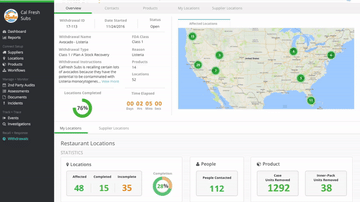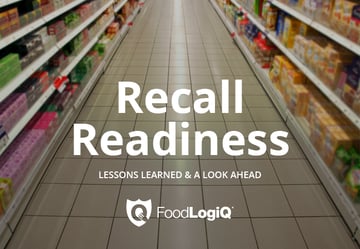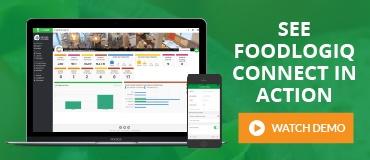When it comes to traceability and food recalls, most of the attention is given to quick response times and the ability to effortlessly trace ingredients and product at the lot level to find out which items and SKUs need to be pulled from shelves. And while this is imperative – quick and accurate recalls are a must-have – there needs to be more attention on reducing food recalls in the first place.
A Look at Proactive vs. Reactive Food Safety
Food safety is an important topic, regardless of the context. Businesses have a moral obligation to customers to provide them with food that’s safe to consume, as well as a financial responsibility to the company. But when it comes to food safety, there are two major approaches. While they may not be discussed in such explicit terms, most businesses either take a proactive or a reactive stance. Let’s look at a couple of fictional examples to get an idea of the difference between the two.
-
Company A packages frozen seafood and sells it to national supermarkets chains across the country. The seafood comes into the facility, the company organizes into portions, packages, and freezes the food, and then ships it out on temperature-controlled trucks to local customers and national distributors. Whenever the company accepts inbound shipments of seafood from suppliers, careful attention is paid to temperature, smell, texture, and appearance. If all of the appropriate criteria aren’t satisfactory, Company A takes the time to investigate and issue a corrective action when issues arise.
-
Company B is similar to Company A, though they package beef and sell it to supermarkets around the state. The meat comes to the plant, they organize and package the meat by cut, and then send it out on temperature-controlled trucks to their various customers. But unlike Company A, Company B only performs occasional cursory quality control checks and instead trusts that the supplier is providing them with safe meat. They take the risk of waiting to see if there are any adverse effects from end consumers and then conduct recalls when required.
While these are obviously extremely abbreviated examples, there’s a clear difference. Both companies are largely the same in most respects, but Company A takes a proactive approach to food safety and Company B takes a reactive approach. While Company A may spend more time and money on upfront food safety efforts, Company B faces a much larger risk of an expensive mandated recall down the road, not to mention a negative impact on their brand image.
It’s good to have a quick response and be ready to pull food in the unfortunate instance that there are food safety issues, but it’s just as important to reduce those instances before they happen. That’s why leading organizations are doing everything they can to prevent costly recalls and improve food safety at multiple levels of the supply chain.
What Organizations Can Do to Prevent Food Safety Issues
“According to a study by the Food Marketing Institute and the Grocery Manufacturers Association, the average cost of a recall to a food company is $10 million in direct costs, which typically include notification, product retrieval, storage, destruction, unsalable product and, of course, the additional labor costs associated with these activities as well as the investigation of the root cause,” explains Don Hsieh, director of commercial and industrial marketing at Tyco Integrated Security. “Depending on the size of the brand or company, these costs may be significantly higher.”
What would a $10 million price tag do to your company? A food recall isn’t just a nuisance or a PR nightmare – it’s a costly problem that can put your company in a financial chokehold.
Prevention sounds great, but where do you start? It’s smart to begin by prioritizing a strict adherence to the global food safety standards recognized by the Global Food Safety Initiative (GFSI). Companies that achieve certifications in GFSI-inspired food safety management practices typically implement sound food safety principles such as:
-
Better batch integrity
-
More frequent and thorough cleaning and sanitation processes
-
Effective use of HACCP programs
-
Established communications protocol and meticulous escalation workflows
-
Superior documentation
-
Better training
-
Anticipatory behavior from all stakeholders
Preventing food safety issues isn’t easy or cheap. It requires a concerted effort on many fronts, but the long-term payoff is well worth the immediate investment.
Prevention-Based Food Safety in Action
In July of 2016, Oklahoma-based Bar-S Foods Co. issued a recall of 370,000 pounds of corn dogs, chicken, and pork hot dogs. The decision to pull the hot dogs was made after a handful of samples taken at the facility tested positive for Listeria. It’s been months since the recall and no known illnesses have been linked back to Bar-S Foods’ hot dogs.
“This is a prevention-based food safety approach in action,” expert Sandra Eskin says. “When routine tests of the facility environment suggested that the hot dogs might be contaminated, Bar-S Foods made immediate and decisive moves to protect consumers.”
While there’s no telling how much it cost Bar-S Foods to recall 370,000 pounds of hot dogs, this situation is still considered a success for the company. Preventative food safety isn’t always about catching issues before they leave the warehouse/production facility/etc. It’s about using the appropriate traceability methods to identify issues and recall food before it makes it to your customers.
Whatever the recall cost Bar-S Foods, that figure is nowhere near what it would have been if actual cases of Listeria had developed. The health costs and legal fees associated with this sort of mandatory recall could have been catastrophic - especially when factoring in damage to the brand in the eyes of consumers.
Contact FoodLogiQ Today
At FoodLogiQ, we’re committed to providing our customers with resources that allow them to understand what’s happening at every stop along the supply chain. Our food safety, traceability, and supply chain transparency software provides end-to-end visibility that saves you time and money.
Other posts you might be interested in
View All Posts
Food Industry
6 min read
| May 18, 2017
FoodLogiQ Disrupts the Food Industry with Market’s First Real-Time Recall Management Solution
Read More
Recall
5 min read
| July 13, 2018
Food Recall Management: How Food Recalls Affect Consumer Buying Habits and What You Can Do About It
Read More
Food Industry
4 min read
| March 13, 2019


